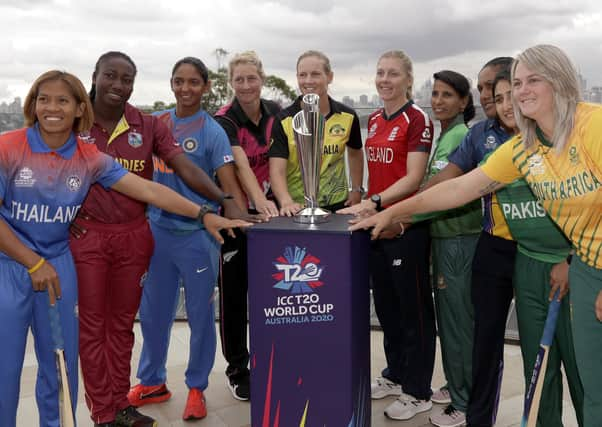An IPL for women surely the next step as respect grows


“Tart’s cricket” was how one distinguished national newspaper journalist would routinely refer to it loudly in the press box as colleagues giggled or openly guffawed.
Happily, attitudes have changed in the past 20 years, with the T20 World Cup just finished in Australia highlighting again the great strides taken by the women’s game.
Advertisement
Hide AdAdvertisement
Hide AdFar from the perceived inferior, openly derided entity that it was, both by journalists and, I would say, by the public at large, women’s cricket is now properly regarded in a society much less tolerant of the sort of prehistoric attitudes described and far quicker to call out discrimination/prejudice of any kind.
So when England captain Heather Knight and her players were knocked out of the T20 World Cup the other day, after rain cruelly washed out their semi-final against India with no reserve day scheduled, the first thing that struck me was the extent to which people cared.
They cared on Twitter, where there was a torrent of opprobrium directed towards the International Cricket Council and the fact that, with the forecast rain in Sydney known about for days, the governing body had not been more adaptable and moved the semi-final location/time.
They cared in newspapers, where many column inches were devoted to the subject as respected voices such as Michael Vaughan weighed into the debate and backed the women.
Advertisement
Hide AdAdvertisement
Hide Ad“This is a World Cup, not some club league,” fumed the former England captain and Yorkshire batsman, who suggested that the ICC should have doubled up the semi-finals and final on the same day as happens in our domestic T20 Blast, instead of effectively protesting that “them are the regs and y’all signed up to them”.
They cared about it, too, in the shops and pubs, in cafes and on streets, indeed among any congregation of cricket/sports fans.
“Got to feel sorry for the England women,” and “there has to be a better way of deciding a World Cup semi-final in the event of rain” was the prevailing view.
Everyone cared, or so it seemed.
If England’s elimination left a sour taste, with Knight and company denied the opportunity to become double white-ball world champions after England’s success at the 50-over World Cup in 2017, it did not detract from the success of the competition per se.
Advertisement
Hide AdAdvertisement
Hide AdIt was another fine tournament, deservedly won by Australia – their fifth success in the seven editions staged – and was capped by a whopping turnout of 86,174 for Sunday’s final in Melbourne, only 4,000 short of the record for any women’s sporting event after the 1999 football World Cup final in California.
If Australia’s abilities were once again confirmed in all their splendour, emphasising the professional nature of women’s cricket in that country to which the English game has belatedly awakened, perhaps the most significant legacy was India’s appearance in the final facilitated, ironically, by the semi-final washout.
For if women’s cricket is to “kick-on” and go to the next level, it is essential that India drives the wagon as it has done for the men’s game, at least in terms of finance/exposure for the players themselves.
It is surely a question of when, not if, there is a women’s Indian Premier League, which would further magnify women’s cricket and encourage more people to take up the sport.
Advertisement
Hide AdAdvertisement
Hide AdIt is not all about finance, of course, heaven forfend, but a women’s IPL would also lead to greater investment at youth level in India and have a major impact on the game in that country and, ergo, the worldwide spread.
Ironically, while many – yours truly included – baulk at the profusion of franchise cricket in the men’s game today, it is an especially valuable vehicle for a women’s game seeking greater parity both in terms of exposure, participation, wages and prize money.
The Hundred can only detract from the men’s County Championship and 50-over Cup, for example, further marginalising the former and clashing with the latter, but the female version this year will be another shot-in-the-arm for a women’s game that does not have such competing traditions/pressures.
That women’s cricket is taken more seriously than it was 20 years ago is beyond question, and the revolution is only set to continue.